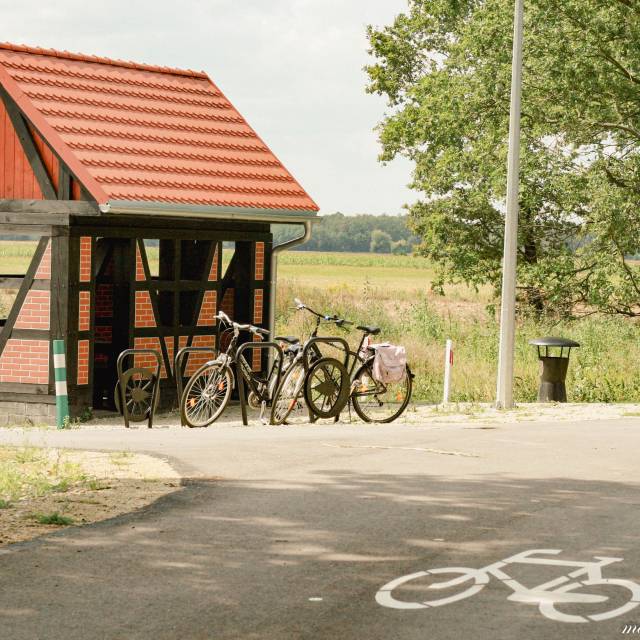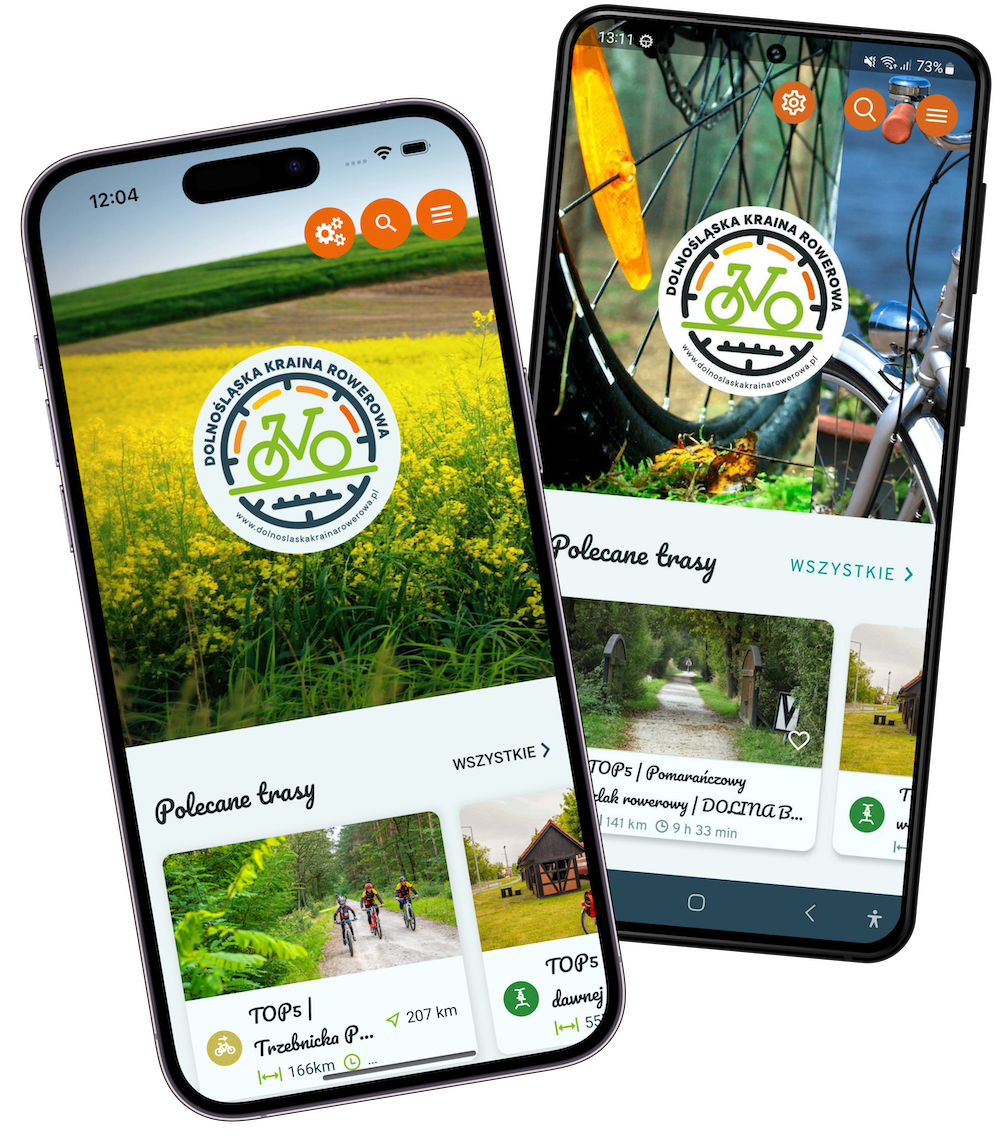Route: Żmigród Railway station - Bychowo - Barkowo - Karnice - Kędzie - Łabuzki - Chodlewo - Korzeńsko - Garbce - Borek - Nowe Domy - Zielony Dom - Ruda Żmigrodzka - Jamnik - Osiek - Grądzik - Żmigród Railway station
A loop around Żmigród, linking several fortified settlements, interesting chapels and wayside crosses (so-called penitential or reconciliation crosses). The loop is a trail, marked in the field in black. Żmigród is a town with excellent transport connections to large cities - from further distances you can take the S5 (Wrocław-Poznań) or the PKP (regional or Intercity Wrocław-Poznań bus service), so we recommend starting the route near the railway station, where there is a convenient Park & Ride.

One of the penitential crosses, also known as the Cross of Reconciliation, on the trail.
The western section of the trail (Żmigród - Węglewo - Chodlewo - Korzeńsko) leads through the flat and agricultural landscape of the Żmigród commune, in the forks of the picturesque, small rivers Barycz and Orla. The route runs mostly on local public roads, with a several-kilometre section of a new cycle path near Bychów, replacing a rather arduous sandy route for cyclists. Between Kędzia and Chodlew there is the most unfavourable section of the route, which can be wet/muddy periodically (so we recommend bikes with wide tyres).
Along the way, it is worth noting the various wayside shrines, penitential crosses (erected in the Middle Ages as part of penance by perpetrators of murders), especially noteworthy are the penitential cross and church in Bychowo, two churches and a penitential cross in Barkow, the fortified settlement in Kędzie, the fortified settlement, two churches and a penitential cross in Korzeńsko.
The eastern section of the trail (Garbce - Ruda Żmigrodzka - Powidzko - Żmigród) leads first through forested and marshy areas along the Barycz River and through the Radziądz and Jamnik pond complexes in Milicz, and then through the agricultural area around Powidzko. The route runs almost exclusively on local asphalt roads, only the Zielony Dom - Szarlotka section leads along road no. 439 and a dirt road. Along the way, you can see two fortified settlements near Szarlotka and Szarzyna, two complexes of Milice Ponds, a penitential cross in Osiek and a church and a penitential cross in Powidzko.

One of the most interesting statues on the trail is St. Nepomucen in Powidzko, photo: Dariusz Wojciechowski
WHAT TO SEE ON THE ROUTE:
Żmigród | market square and Palace and Park Complex
Węglewo | the only railway test track in Poland and one of the few in Europe; new trains to run on Polish tracks, including the famous Pendolino, are being tested here
Bychowo | a penitential cross at the crossroads, Baroque St. John of Nepomuk Church
Karnice | farmstead of Michał Sznajder/ Pickled vegetables from the Barycz Valley (possibility to buy pickles)
Barkówko | former station of the narrow-gauge railway line Żmigród - Wąsosz from 1886,
Barkowo | St. Anthony's post-evangelical classicist church, penitential cross
Kędzie | weir on the Barycz River, settlement from the Lusatian culture, a fragment of an earthen embankment preserved
Bychowo weir | Weir called '8 Tam'
Chodlewo | Pillar chapel, probably a former memorial to those killed in World War I
Korzeńsko | Baroque church of the Elevation of the Holy Cross from the 18th century, neo-Romanesque post-evangelical church of St. John Paul II from the 19th century
Borek | interesting folk chapel with wooden decoration
Szarzyna | an early medieval settlement on a pond
Ruda Żmigrodzka | Rudy pond with a viewing platform, numerous colonies of seagulls, an oak tree by the roadside with numerous traces of the existence of the protected goatsucker

An oak tree in which the protected great capricorn beetle has a habitat.
Jamnik | Jamnik pond, view of an extensive pond and numerous birds
Osiek | penitential cross
Sieczków | former stop of the narrow-gauge railway, with bridge abutments, pole chapel, behind the hamlet the site of a Nazi forced labour camp from the Second World War
Powidzko | Baroque-classical church of St. John the Baptist from the 18th century, inside there is a wooden crucifix from the 14th century, in the cemetery there is a lime-whitened penitential cross and a grave of the victims of the Nazi camp in Sieczkowo. Powidzko and its surroundings are famous for the cultivation of broad beans.
Grądzik | a former potato flakes factory.
WHERE TO EAT?
Żmigród | Żmigrodzianka, Stara Piekarnia, cafés in the market square, Bar Pychotka in the market square, Pan Japa Food Truck, Zamkowa restaurant in the Palace and Park Complex
Ruda Żmigrodzka | Karczma Rybna (open in high season Thursday - Sunday)
HIGHT PROFILE OF THE ROUTE:

Do you want a GPX of the route? Contact us: biuro@dkr.travel.pl
Need help organising a group holiday? Contact us: biuro@dkr.travel.pl
If you are interested in helping us plan and prepare your group's stay and in being accompanied by a local guide who will tell you about the region's assets and take you to the most interesting places, please contact us. (Paid offer, we will provide an offer after a no-obligation e-mail contact). We provide certified guides, available during the week and at weekends, who also speak English or German.







































